Maui, an island in Hawaii, is a haven for birdlife. This beautiful island is home to over 200 species of birds, many of which are native to Hawaii.
While walking on one of Maui’s trails or beaches, you might come across a colorful Hawaiian honeycreeper or hear the melodious songs of a native thrush.
Whether you’re a birdwatcher or not, the birdlife on Maui is an awe-inspiring experience.
In this article we will discuss the diverse bird species that inhabit the island and their distribution, providing you with an insight into the fascinating world of birds on this stunning island.
1. Nene
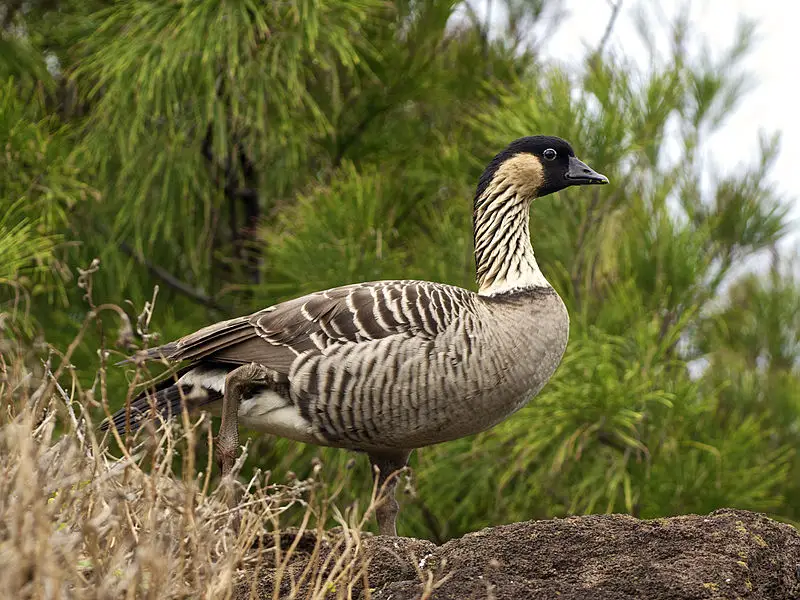
The Nene bird, also known as the Hawaiian Goose, is a remarkable species endemic to the Hawaiian Islands. Recognized as the state bird of Hawaii, the Nene is characterized by its striking appearance with mottled brown and white feathers and a distinctive curved bill.
This bird has faced significant conservation challenges, with habitat loss and introduced predators threatening its population. However, dedicated efforts have led to its recovery, making it a symbol of conservation success in Hawaii.
The Nene’s resilience and unique status highlight the importance of preserving native species in fragile ecosystems like the Hawaiian Islands.
Scientific classification:
| Kingdom | Animalia |
| Phylum | Chordata |
| Class | Aves |
| Order | Anseriformes |
| Family | Anatidae |
| Genus | Branta |
| Species | B. sandvicensis |
Also Featured In: Most Common United States Birds, Birds of Kauai, Hawaii
2. Hawaiian Honeycreeper
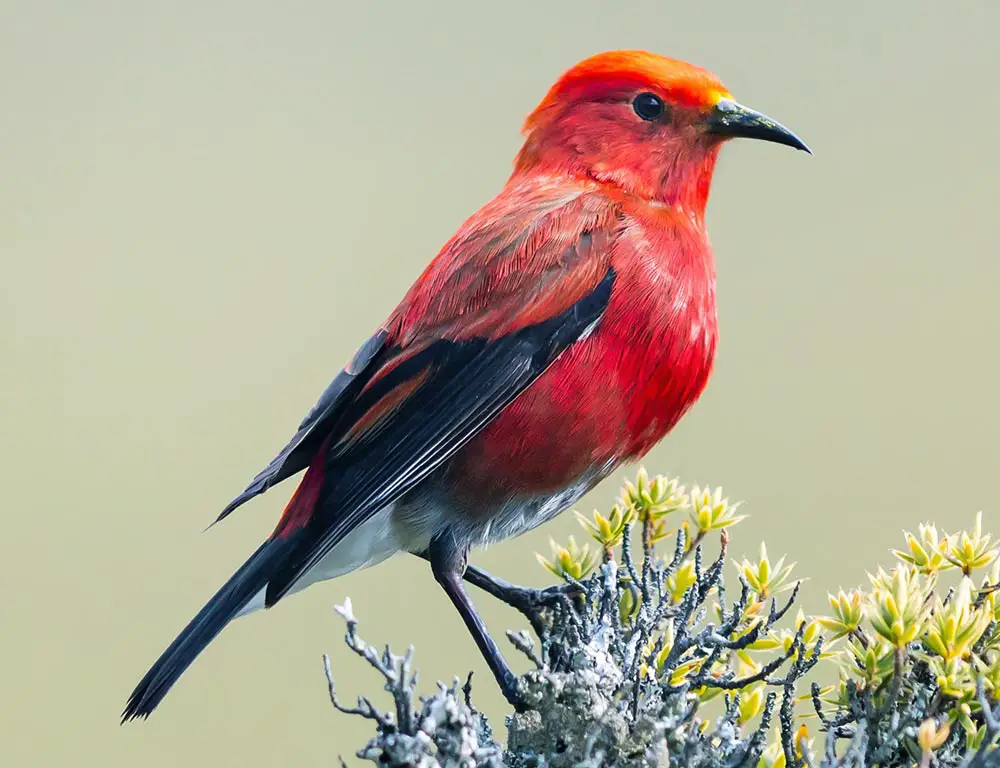
The Hawaiian honeycreepers are a unique group of birds native to the Hawaiian Islands. These small passerines have adapted features not seen in any other finch, making them incredibly diverse.
Sadly, since human arrival in Hawaii, many species of these beautiful creatures have been driven to extinction due to habitat destruction and competition with invasive species such as rats and mongooses.
However, conservation efforts are ongoing which aim to protect remaining populations from further decline and reintroduce extinct ones back into their former habitats where possible.
With luck, we may one day be able to once again see flocks of brilliantly colored honeycreepers grace Hawaii’s skies.
Scientific classification:
| Kingdom | Animalia |
| Phylum | Chordata |
| Class | Aves |
| Order | Passeriformes |
| Family | Fringillidae |
| Subfamily | Carduelinae |
Also Featured In: Hawaii Birds, Most Common Oahu Birds
3. Hawaiian Petrel
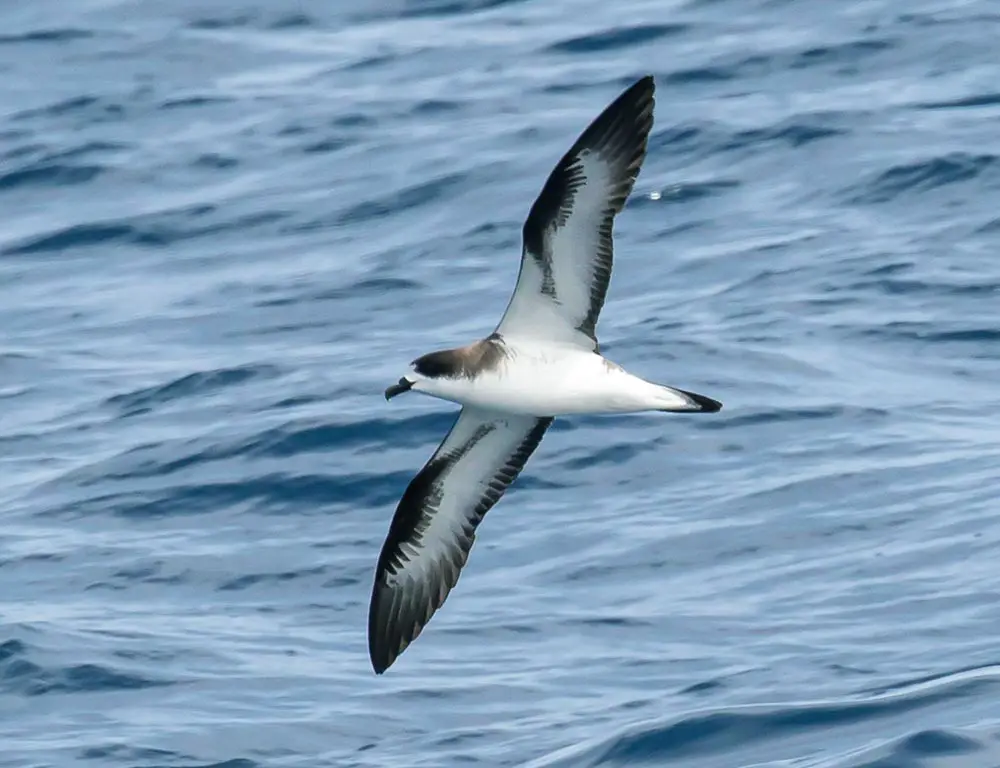
The Hawaiian Petrel, locally known as ‘Ua’u, is a remarkable seabird endemic to Hawaii. These birds are characterized by their dark plumage, hooked bills, and elegant flight patterns.
They nest in remote mountainous regions, making them challenging to study and protect. Hawaiian Petrels face threats from habitat degradation, light pollution, and introduced predators.
Conservation efforts are crucial to preserving this species, as it plays a vital role in the ecosystem and cultural significance in Hawaiian traditions.
Protecting their nesting sites and raising awareness about their plight is essential for the survival of these unique seabirds.
Scientific classification:
| Kingdom | Animalia |
| Phylum | Chordata |
| Class | Aves |
| Order | Procellariiformes |
| Family | Procellariidae |
| Genus | Pterodroma |
| Species | P. sandwichensis |
Also Featured In: Hawaii Big Island Birds You Should Know, White Oahu Birds
4. Hawaiʻi ʻamakihi
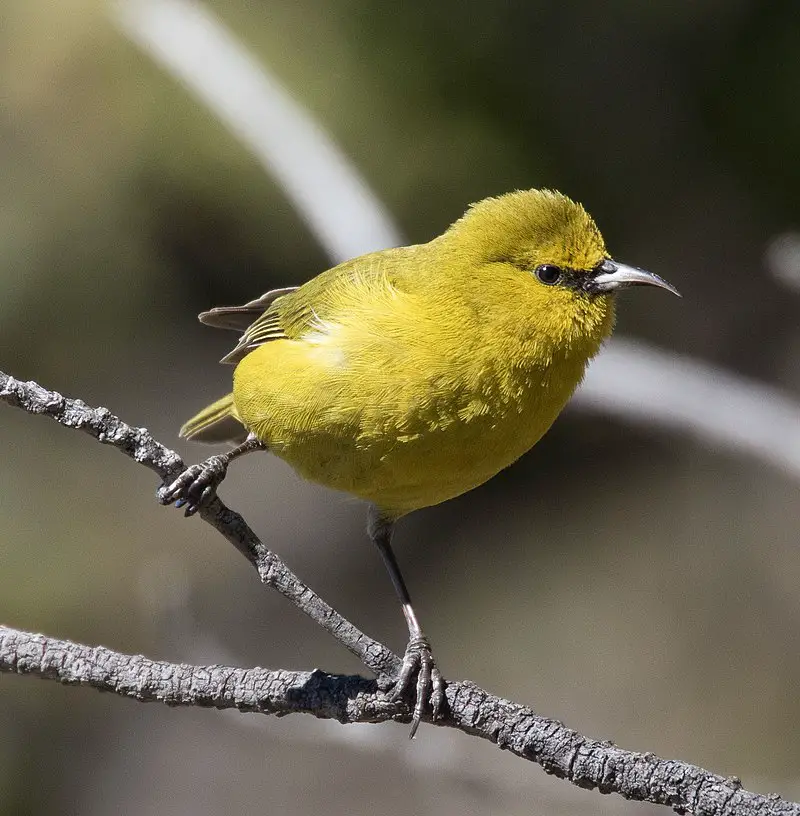
Hawaiʻi ʻamakihi is a species of Hawaiian honeycreeper belonging to the genus Chlorodrepanis.
It was previously placed in the Hemignathus group but was reclassified based on mitochondrial and nuclear DNA sequence analysis.
The two recognized subspecies are C. v. Wilsoni found on Maui, Molokaʻi, and Lanai; and C. vvirens occurring throughout Hawai’i Island except for the Kona district where it has been extirpated due to habitat destruction from human activities such as urbanization and agriculture development.
The Hawaii amakihinest is mainly in the lowland ōhi’a forest dominated by Metrosideros polymorpha trees at elevations up to 900-1,800 meters (3,000–6,000 ft).
With its bright yellow breast feathers adorning its olive green body plumage, the Hawai` i `Amakihif flies gracefully through forests searching for nectar sources like flowers or insects.
Scientific classification:
| Kingdom | Animalia |
| Phylum | Chordata |
| Class | Aves |
| Order | Passeriformes |
| Family | Fringillidae |
| Subfamily | Carduelinae |
| Genus | Chlorodrepanis |
| Species | C. virens |
5. ʻApapane
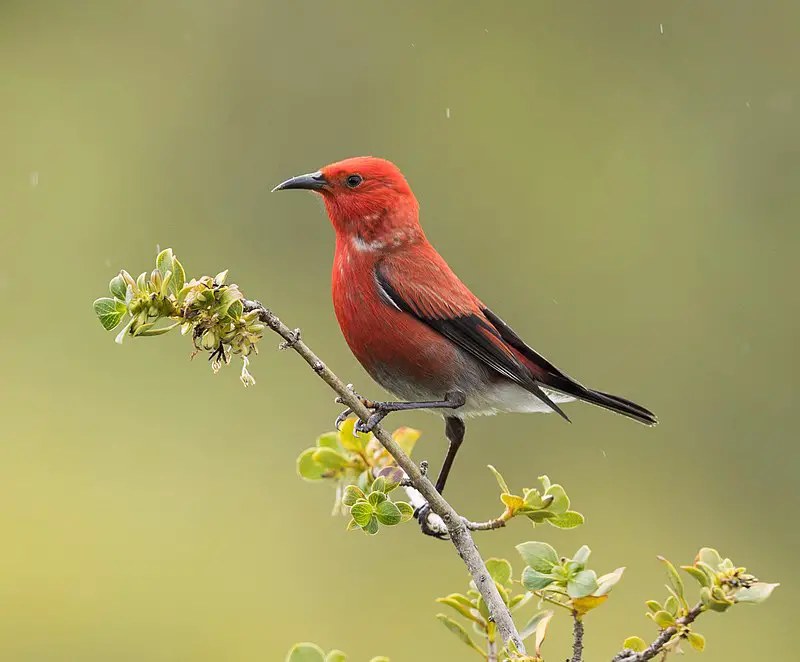
The ‘Apapane is a beautiful bird native to the Hawaiian Islands. It has bright crimson feathers and is a member of the honeycreeper family.
This small species can be found on all main islands, including Hawaiʻi, Maui, Lānaʻi, Kauaʻi, Molokaʻi and Oahu.
These birds are most commonly seen in ōhi’a trees where they feed off nectar from flowers as well as insects that live among the foliage.
They nest high up in these tall hardwood trees and also soar through rainforest treetops looking for food sources with their long wingspan.
The ‘Apapane’s vibrant coloration makes it an iconic symbol of Hawaii’s diverse wildlife landscape; its cheerful presence often brings joy to visitors who have come to explore this tropical paradise.
Scientific classification:
| Kingdom | Animalia |
| Phylum | Chordata |
| Class | Aves |
| Order | Passeriformes |
| Family | Fringillidae |
| Subfamily | Carduelinae |
| Genus | Himatione |
| Species | H. sanguinea |
Also Featured In: Red Birds that Found in the United States America, Native Birds Of Kure Atoll
6. Maui Parrotbill
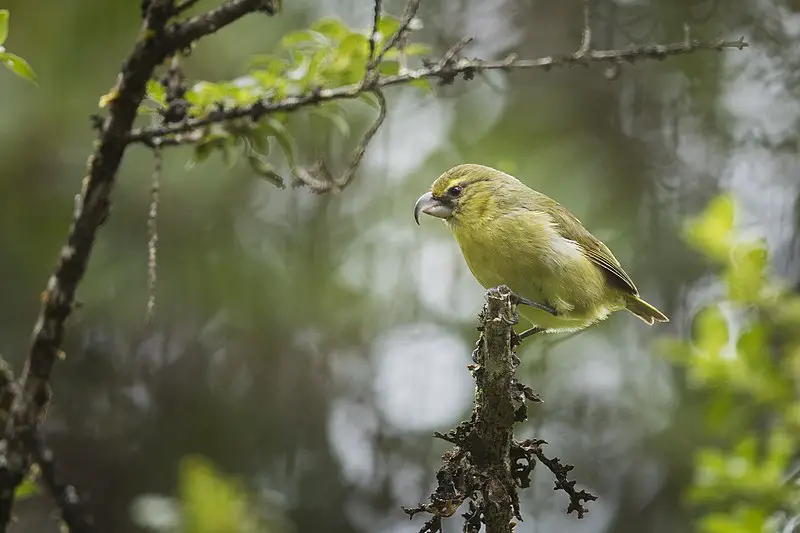
The Maui parrotbill is a species of Hawaiian honeycreeper bird and is endemic to the island of Maui in Hawaii.
It can be found only within 50 square kilometers on the windward slopes of Haleakalā at altitudes ranging from 1,200–2,150 meters.
This critically endangered species has an estimated population of between 250-540 individuals as of 2016.
Despite conservation efforts such as increasing its habitat size and monitoring for disease outbreaks, it remains highly vulnerable due to predation by invasive rats and loss or degradation of its native forest habitat caused by feral animals like goats.
However, with proper protection measures this beautiful species still stands a chance at survival.
Scientific classification:
| Kingdom | Animalia |
| Phylum | Chordata |
| Class | Aves |
| Order | Passeriformes |
| Family | Fringillidae |
| Subfamily | Carduelinae |
| Genus | Pseudonestor Rothschild, 1893 |
| Species | P. xanthophrys |
7. Hawaiian Stilt
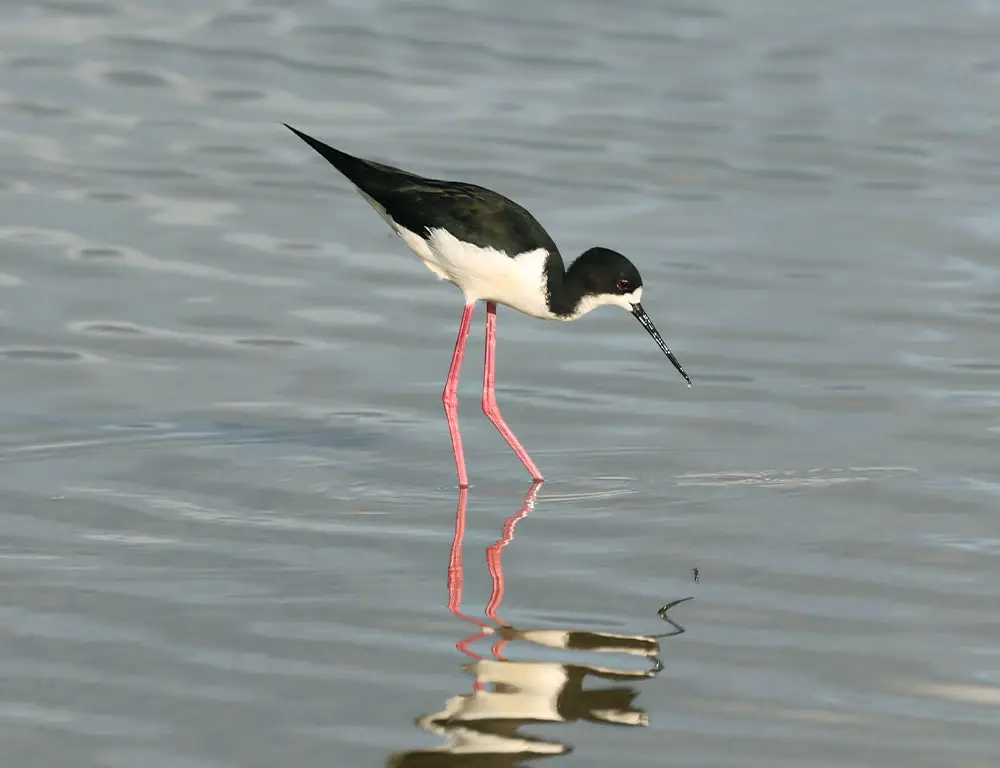
The Hawaiian Stilt is an endangered subspecies of the Black-necked Stilt, a long-legged shorebird with a slender beak.
It’s also known as the Aeʻo, Kukuluaeʻo or Hawaiian black-necked stilt and can mainly be found in Hawaii.
They are usually seen near coastal wetlands such as lagoons and tidal flats where they spend most of their time searching for food like worms and insects on shallow water areas.
The main threats to this species include habitat loss due to urbanization and wetland drainage which has caused their populations to decline significantly over recent years.
Conservationists are working hard towards restoring these habitats so that these birds have more suitable places to live for their population numbers to increase once again.
Scientific classification:
| Kingdom | Animalia |
| Phylum | Chordata |
| Class | Aves |
| Order | Charadriiformes |
| Family | Recurvirostridae |
| Genus | Himantopus |
| Species | H. mexicanus |
| Subspecies | H. m. knudseni |
Also Featured In: White Birds Commonly Found in Hawaii,
8. Hawaiian Duck
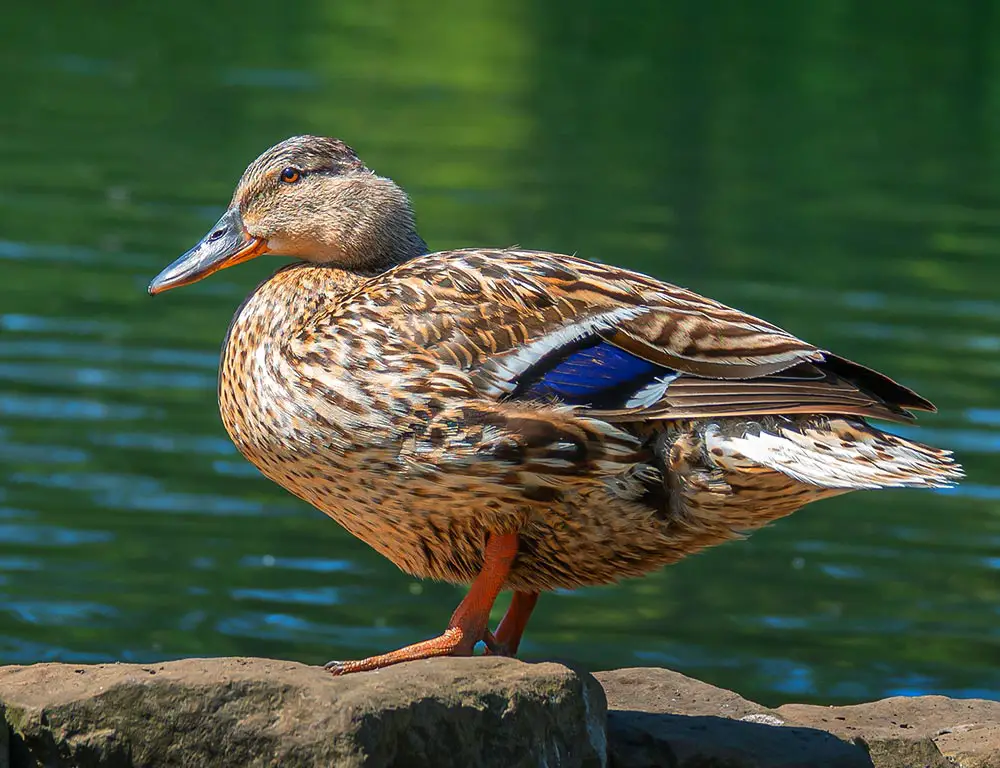
The Hawaiian duck, also known as Koloa, is an endemic bird of the large islands in Hawaii. It belongs to the Anatidae family and it is closely related to mallard ducks.
The main difference between these two species lies in their looks; while male and female Mallards have different colors, Hawaiian Ducks are monochromatic with similarly marked males and females.
This species does not migrate from its habitat either unlike other Anas genus ducks.
With a brownish-grey coloration on its body along with bright green head feathers, this beautiful creature can be seen mostly near ponds or vegetation areas around Hawaii’s coasts where they feed mainly on aquatic plants like algae and insects found there.
Scientific classification:
| Kingdom | Animalia |
| Phylum | Chordata |
| Class | Aves |
| Order | Anseriformes |
| Family | Anatidae |
| Genus | Anas |
| Species | A. wyvilliana |
9. Hawaiian Coot
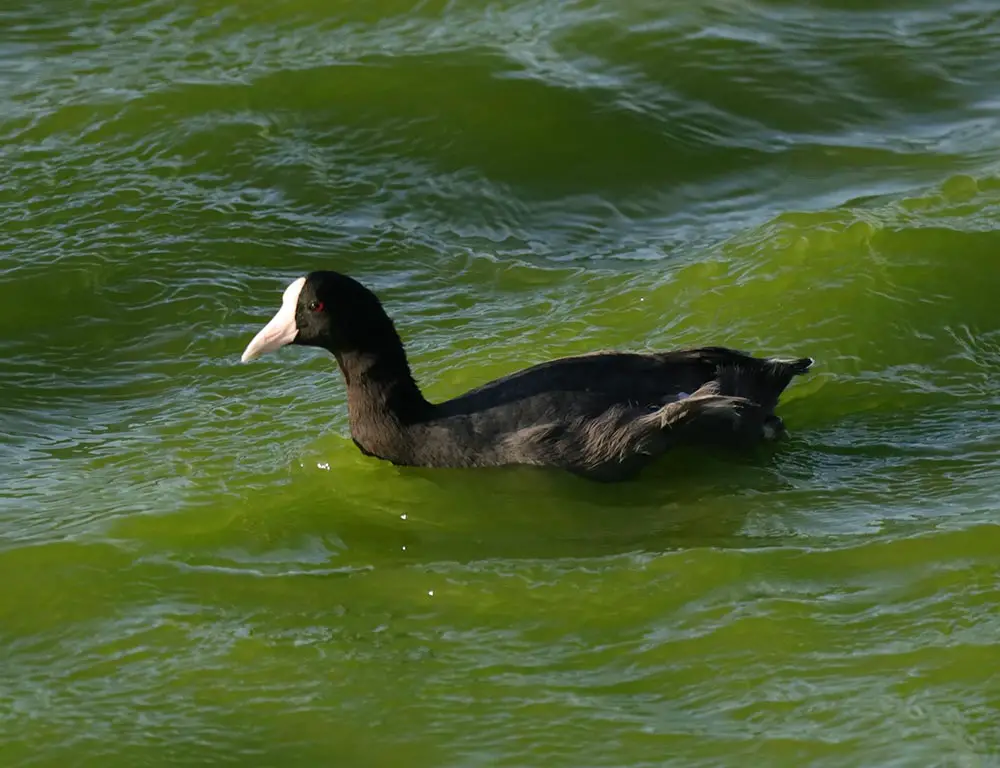
The Hawaiian Coot, also known as the ʻ’alae ke’oke’o in Hawaiian is a striking species of bird found only on the islands of Hawaii. It has an overall black plumage and a prominent white bill with a yellow spot at its base.
The coot measures 13-16 inches long and weighs about 1 pound 9 ounces when fully grown. They are quite similar to American Coots but have adapted well to their tropical home habitat over time.
Generally, they can be seen foraging along lakes or wetlands where there is plenty of mud or shallow water available for them to feed from aquatic vegetation such as algae, grasses, and insects that live beneath its waters surface.
These birds are highly social animals preferring company while swimming around together during mating season which occurs generally between spring and summer months each year in Hawaii.Scientific classification:
| Kingdom | Animalia |
| Phylum | Chordata |
| Class | Aves |
| Order | Gruiformes |
| Family | Rallidae |
| Genus | Fulica |
| Species | F. alai |
10. Hemignathus
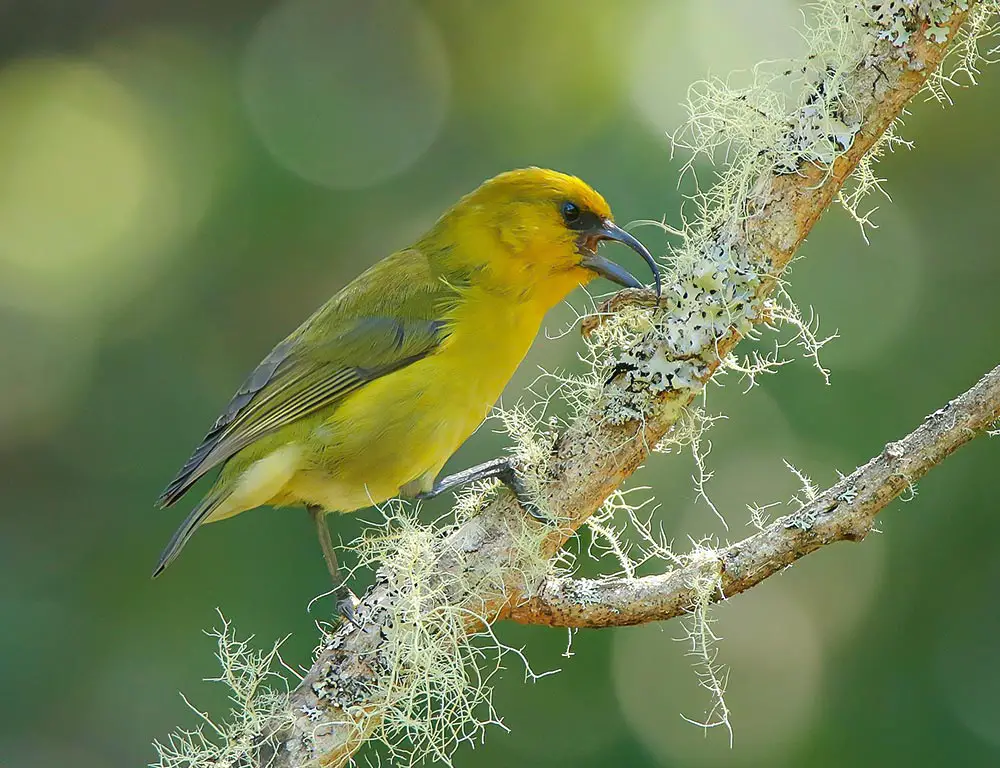
Hemignathus is a genus of Hawaiian honeycreeper birds, found exclusively in the islands.
These beautiful and vibrant creatures have been greatly affected by human actions over the last two centuries – habitat destruction, introduction of predators and more significantly mosquito-borne diseases have all contributed to their decline in numbers.
The most notable species is the giant nukupu’u (Hemignathus vorpalis), which sadly has become extinct due to these pressures.
Conservation efforts need to be increased if we are going to preserve what little remains of this unique family for future generations.
Scientific classification:
| Kingdom | Animalia |
| Phylum | Chordata |
| Class | Aves |
| Order | Passeriformes |
| Family | Fringillidae |
| Subfamily | Carduelinae |
| Genus | Hemignathus Lichtenstein, MHC, 1839 |
11. Pueo
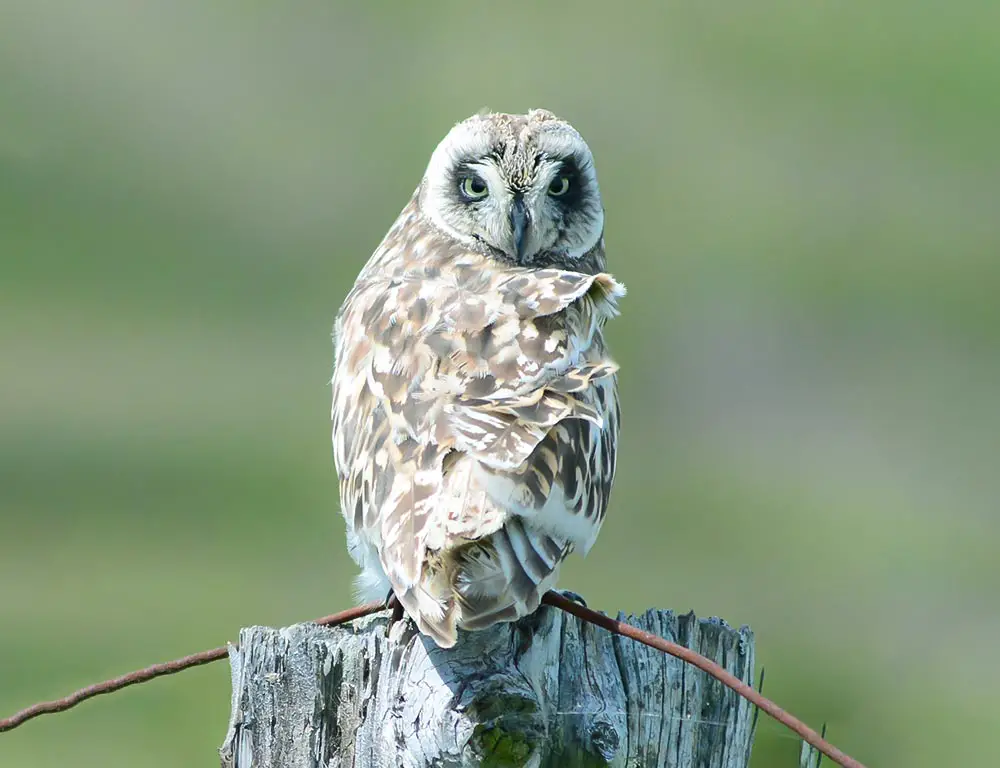
Pueo is a subspecies of the short-eared owl and is endemic to Hawaii. It has an important place in Hawaiian culture, as it often appears as ʻaumākua (ancestor spirits).
These birds live in forests and grasslands throughout the islands of Hawaiʻi. They are unfortunately becoming rare due to habitat loss, but they continue to be deeply respected by local communities for their spiritual significance.
Pueo has unique physical characteristics such as yellow eyes, grayish brown feathers with white markings on their wings and head, and long legs with feathered feet which help them hunt fast-moving prey like rodents during dusk or dawn hours.
Despite their declining numbers across Hawaii, pueos remain a beloved part of Hawaiian culture that still inspires awe today.
Scientific classification:
| Kingdom | Animalia |
| Phylum | Chordata |
| Class | Aves |
| Order | Strigiformes |
| Family | Strigidae |
| Genus | Asio |
| Species | A. flammeus |
| Subspecies | A. f. sandwichensis |
12. Loxops
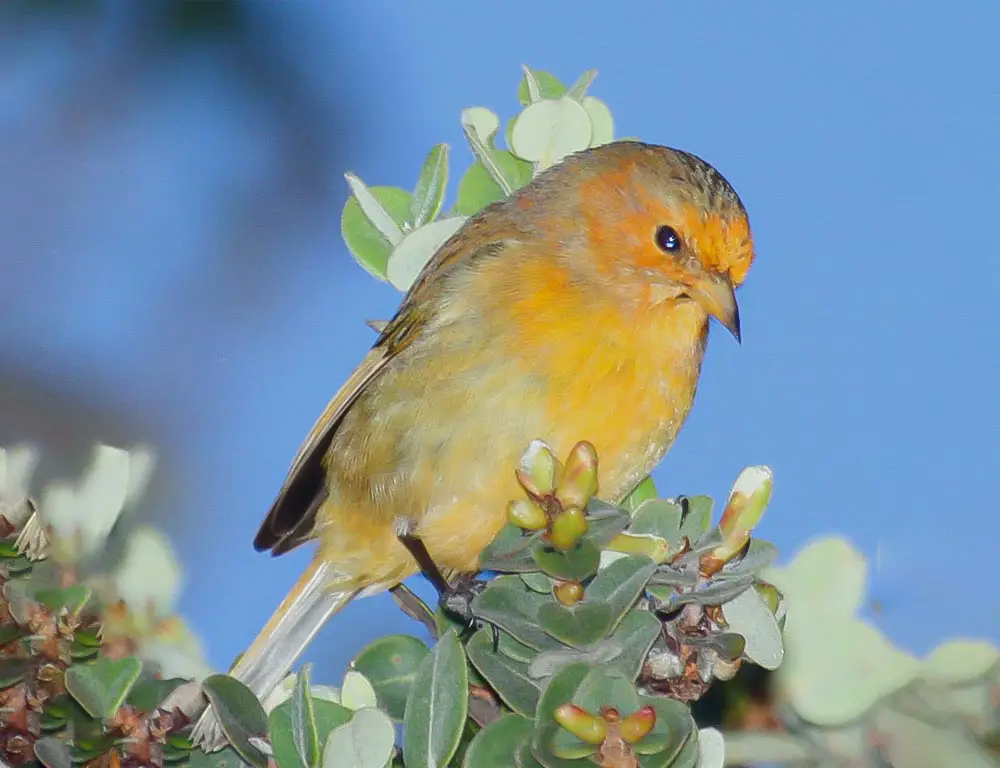
Loxops, also known as ʻakepa, is a genus of Hawaiian honeycreeper birds from the finch family. This genus includes five species, with two that are believed to be recently extinct or possibly extinct.
The Loxops genus is thought to have diverged from its closest relatives, the Chlorodrepanis ʻamakihis, during the earliest Pleistocene, approximately 2.47 million years ago, based on molecular analysis.
These birds are endemic to the Hawaiian archipelago and are known for their colorful plumage and unique beaks, which are adapted to their diet of nectar and insects.
Sadly, habitat destruction and introduced predators have contributed to the decline of many Loxops species, leading to their endangered status.
Conservation efforts are underway to help protect these beautiful birds for future generations to enjoy.
Scientific classification:
| Kingdom | Animalia |
| Phylum | Chordata |
| Class | Aves |
| Order | Passeriformes |
| Family | Fringillidae |
| Subfamily | Carduelinae |
| Genus | Loxops Cabanis, 1847 |
Conclusion
Maui boasts a diverse avian population, with a fascinating array of 12 bird species that call the island home. These feathered inhabitants add to the island’s natural beauty and ecological richness.
From the colorful and elusive Hawaiian honeycreeper species like the ‘I’iwi and ‘Apapane to the striking and distinctive Hawaiian nene goose, Maui’s birdlife is a testament to the unique and fragile ecosystems found on the island.
Conservation efforts are crucial to protect these species and ensure they continue to thrive on this picturesque Hawaiian island, reminding us of the importance of preserving our natural world.